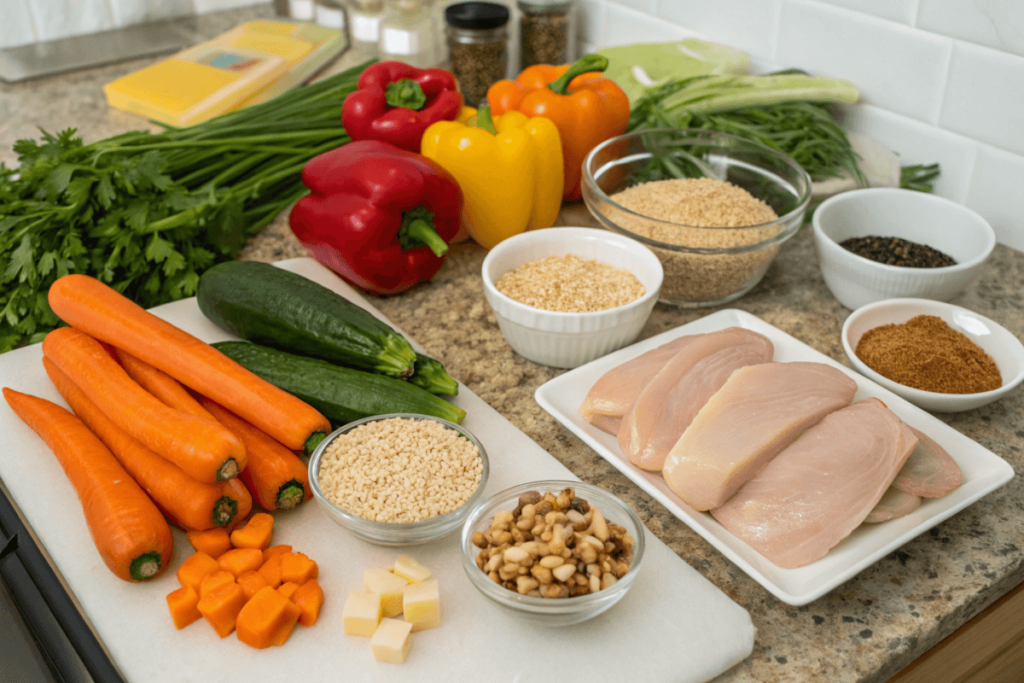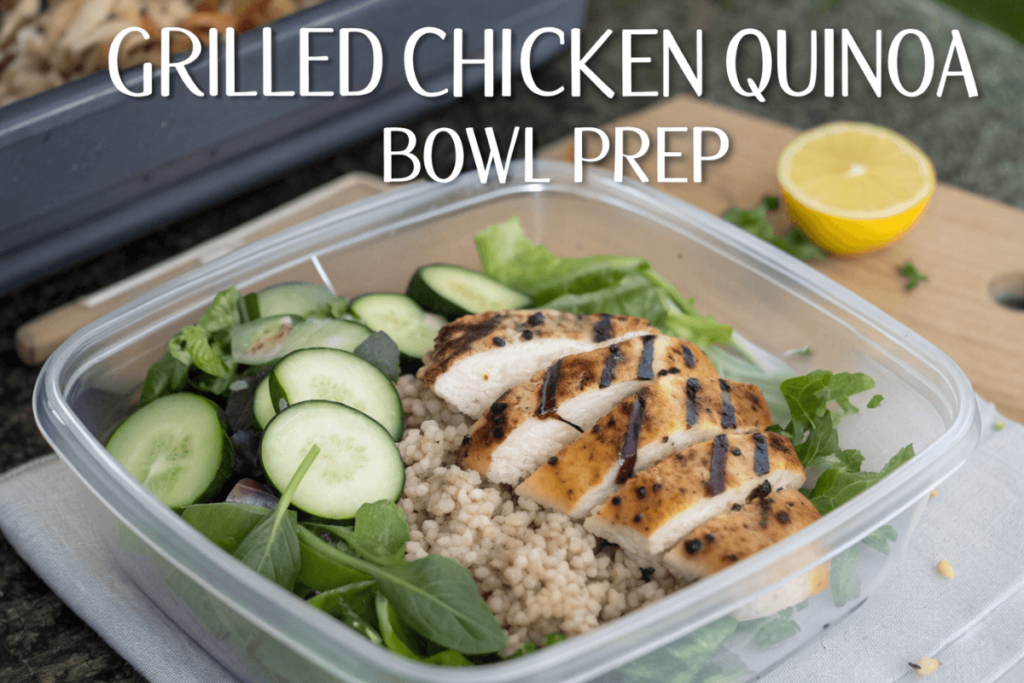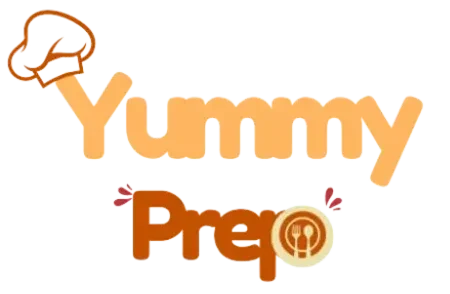Discover easy and delicious low-sodium lunch meal prep recipes to support a heart-healthy lifestyle. Perfect for busy weekdays, these recipes are packed with flavor and low on salt.
Are you tired of bland low-sodium meals? Let me show you how to make meal prep exciting again! Eating a low-sodium diet doesn’t mean sacrificing flavor—it’s all about using the right ingredients and seasonings.
Did you know that over 70% of the sodium we consume comes from processed foods? Yikes! By preparing your lunches at home, you can take control of your salt intake while still enjoying delicious, satisfying meals. Stick with me, and I’ll share some of my favorite low-sodium lunch meal prep ideas that are easy to make, full of flavor, and perfect for a busy lifestyle.
Table of Contents
Essential Ingredients for Low-Sodium Meal Prep

Creating delicious low-sodium meals starts with having the right ingredients on hand. Here’s a list of pantry staples and fresh ingredients that will help you prepare flavorful, heart-healthy lunches:
Low-Sodium Pantry Staples
- Herbs and Spices: Stock up on dried herbs like oregano, basil, thyme, and rosemary. Don’t forget spices such as cumin, paprika, and turmeric for added depth of flavor.
- Vinegar: Balsamic, apple cider, and rice vinegar add tangy flavor without sodium.
- Olive Oil: A high-quality extra virgin olive oil is essential for dressings and cooking.
- Low-Sodium Broth: Keep low-sodium vegetable or chicken broth on hand for soups and sauces.
- Whole Grains: Quinoa, brown rice, and whole wheat pasta are excellent bases for lunch bowls.
- Nuts and Seeds: Unsalted almonds, walnuts, and pumpkin seeds add crunch and healthy fats.
- No-Salt-Added Canned Beans: Chickpeas, black beans, and kidney beans are great sources of protein and fiber.
Recommended Fresh Ingredients
- Lean Proteins: Choose fresh chicken breast, turkey, fish, or tofu for protein-packed meals.
- Colorful Vegetables: Load up on bell peppers, carrots, cucumbers, and leafy greens for nutrients and crunch.
- Fresh Fruits: Citrus fruits like lemons and limes add flavor without sodium. Berries and apples are great for sweetness.
- Fresh Herbs: Cilantro, parsley, and mint can elevate any dish with bright flavors.
- Garlic and Onions: These aromatic ingredients add depth to your dishes without relying on salt.
Tips for Reading and Understanding Nutrition Labels
When shopping for ingredients, it’s crucial to read nutrition labels carefully:
- Look for “Low Sodium” or “No Salt Added” labels: These products have significantly less sodium than their regular counterparts.
- Check the Percent Daily Value (%DV): Aim for products with a sodium %DV of 5% or less per serving.
- Be aware of serving sizes: Some products may seem low in sodium, but the serving size might be smaller than you expect.
- Compare brands: Different brands of the same product can vary widely in sodium content.
By stocking your kitchen with these low-sodium essentials and being mindful of nutrition labels, you’ll be well-equipped to create delicious, heart-healthy lunches. Remember, the key to successful low-sodium cooking is to focus on fresh, whole ingredients and to use herbs and spices liberally to enhance flavor without relying on salt.
Easy Low-Sodium Lunch Meal Prep Recipes
Now that we’ve covered the basics, let’s dive into some delicious and easy low-sodium lunch recipes perfect for meal prepping. These recipes are not only heart-healthy but also packed with flavor and nutrition.
1. Mediterranean Chickpea Salad

This vibrant salad is a perfect make-ahead lunch that’s both satisfying and nutritious.
Ingredients:
- 2 cans of no-salt-added chickpeas, drained and rinsed
- 1 cucumber, diced
- 1 pint cherry tomatoes, halved
- 1/2 red onion, finely chopped
- 1/4 cup chopped fresh parsley
- 1/4 cup chopped fresh mint
- 1/4 cup extra virgin olive oil
- 2 tbsp lemon juice
- 1 tsp dried oregano
- Black pepper to taste
Instructions:
- In an expansive bowl, combine chickpeas, cucumber, tomatoes, and ruddy onion.
- In a small bowl, whisk together olive oil, lemon juice, oregano, and black pepper.
- Pour the dressing over the serving of mixed greens and hurl to combine.
- Fold in fresh herbs.
- Divide into meal prep containers and refrigerate.
Prep Time: 15 minutes Storage: Keeps well in the refrigerator for up to 5 days
This salad is not only low in sodium but also high in fiber and plant-based protein. The fresh herbs and lemon juice add brightness without the need for added salt.
2. Grilled Chicken & Quinoa Bowls with Lemon-Tahini Dressing

These protein-packed bowls are perfect for a filling and flavorful lunch.
Ingredients:
- 4 boneless, skinless chicken breasts
- 2 cups cooked quinoa
- 2 cups mixed salad greens
- 1 cup cherry tomatoes, halved
- 1 cucumber, sliced
- 1/4 cup tahini
- 2 tbsp lemon juice
- 1 clove garlic, minced
- Water to thin
- 1 tsp olive oil
- 1 tsp dried thyme
- 1 tsp dried rosemary
- Black pepper to taste
Instructions:
- Season chicken with thyme, rosemary, and black pepper. Grill until cooked through.
- combine In a little bowl, whisk together tahini, lemon juice, garlic, and water until smooth.
- Assemble bowls: Start with quinoa, add salad greens, tomatoes, and cucumber.
- Slice grilled chicken and add to bowls.
- Drizzle with lemon-tahini dressing.
Prep Time: 30 minutes Storage: Keep components separate and assemble before eating. Lasts 3-4 days in the refrigerator.
These bowls are customizable—feel free to swap in your favorite vegetables or use tofu instead of chicken for a vegetarian option.
3. Veggie-Packed Lentil Soup (Make-Ahead Friendly!)

This hearty soup is perfect for meal prep and gets even better as it sits.
Ingredients:
- 1 cup dried green lentils
- 1 onion, diced
- 2 carrots, diced
- 2 celery stalks, diced
- 3 cloves garlic, minced
- 1 can no-salt-added diced tomatoes
- 6 cups low-sodium vegetable broth
- 2 cups chopped kale
- 1 tbsp olive oil
- 1 tsp cumin
- 1 tsp smoked paprika
- 1/2 tsp turmeric
- Black pepper to taste
- 1 bay leaf
Instructions:
- Heat olive oil in a large pot. Sauté onion, carrots, and celery until softened.
- Add garlic and flavors, cook for 1 miniature until fragrant.
- Add lentils, tomatoes, broth, and bay leaf. Bring to a bubble, at that point stew for 25-30 minutes.
- Add kale and cook for an extra 5 minutes.
- Remove bay leaf before serving.
Prep Time: 45 minutes Storage: Keeps well in the refrigerator for up to 5 days or can be frozen for up to 3 months.
This soup is not only low in sodium but also high in fiber and plant-based protein. The combination of spices adds depth and flavor without relying on salt.
By incorporating these recipes into your meal prep routine, you’ll have delicious, low-sodium lunches ready to go throughout the week. Remember to taste and adjust seasonings as needed—your palate will adapt to less salt over time, allowing you to appreciate the natural flavors of the ingredients.
Meal Prep Tips for a Low-Sodium Diet
Successful meal prepping is key to maintaining a low-sodium diet without sacrificing flavor or convenience. Here are some expert tips to help you master the art of low-sodium meal prep:
Batch Cooking for the Week
- Plan Your Menu: Before shopping, plan your meals for the week. This helps you buy only what you need and ensures variety in your diet.
- Choose Flexible Fixings: Select fixings that can be utilized in numerous dishes. For example, grilled chicken can be used in salads, wraps, or grain bowls.
- Prep Base Ingredients: Cook large batches of whole grains, and roast vegetables, and prepare lean proteins that can be mixed and matched throughout the week.
- Make Sauces and Dressings: Prepare low-sodium sauces and dressings in advance. Store them separately to add flavor to your meals just before eating.
Portion Control and Storage Tips
- Invest in Quality Containers: Use glass or BPA-free plastic containers with tight-fitting lids to keep food fresh and prevent spills.
- Portion Meals Individually: Divide your prepared food into single-serving containers. This makes grabbing lunch quick and easy and helps with portion control.
- Label Everything: Mark containers with contents and dates prepared to keep track of freshness.
- Use the “First In, First Out” Rule: Place newer items at the back of the fridge and older ones in front to ensure nothing goes to waste.
Creative Ways to Add Flavor Without Salt
- Citrus Zest and Juice: Lemon, lime, or orange can brighten up any dish without adding sodium.
- Roast or Grill Vegetables: These cooking methods enhance natural flavors without the need for added salt.
- Use Aromatics: Onions, garlic, and ginger add depth to dishes. Sauté them as a base for soups, stews, or grain bowls.
- Experiment with Herbs: Fresh herbs like basil, cilantro, and parsley can transform a dish. Add them just before eating for maximum flavor.
- Try Vinegar: Balsamic, apple cider, or rice vinegar can add tang and complexity to your meals.
- Incorporate Umami-Rich Foods: Mushrooms, tomatoes, and nutritional yeast can add savory depth without sodium.
Snack Prep
Don’t forget about snacks! Prepare low-sodium options like:
- Cut vegetables with homemade hummus
- Unsalted nuts and fresh fruit
- Air-popped popcorn seasoned with herbs
By following these meal prep tips, you’ll set yourself up for success in maintaining a low-sodium diet. Remember, the key is to plan ahead, use fresh ingredients, and get creative with flavors. With practice, you’ll find that low-sodium meals can be just as satisfying and even more flavorful than their high-sodium counterparts.
Common Mistakes to Avoid in Low-Sodium Meal Prep
When transitioning to a low-sodium diet, it’s easy to fall into some common traps. Being aware of these pitfalls can help you stay on track with your heart-healthy eating goals. Here are some mistakes to avoid and tips for success:
1. Over-Reliance on Packaged “Low-Sodium” Products
While it’s tempting to reach for products labeled “low-sodium” or “reduced sodium,” these can still contain more salt than you might expect. Moreover, they often lack the flavor and nutritional value of whole, fresh foods.
Solution: Focus on whole, unprocessed ingredients as the foundation of your meals. When you do use packaged products, always check the nutrition label and compare brands to find the lowest sodium option.
2. Neglecting to Plan Ahead for Snacks and Sides
It’s easy to focus on the main dishes and forget about snacks and side dishes. This can lead to reaching for convenient, high-sodium options when hunger strikes.
Solution: Include snacks and sides in your meal prep routine. Prepare cut vegetables, portion out unsalted nuts, or make a batch of low-sodium hummus to have on hand throughout the week.
3. Forgetting to Hydrate
Proper hydration is crucial when following a low-sodium diet. Water helps your body maintain fluid balance and can help flush out excess sodium.
Solution: Keep a water bottle with you throughout the day and aim for at least 8 glasses of water daily. Infuse water with cucumber, berries, or citrus for flavor without added sodium.
4. Not Balancing Flavors
Sometimes, in an effort to reduce sodium, meals can become bland and unappetizing. This can lead to dissatisfaction and difficulty sticking to the diet.
Solution: Experiment with herbs, spices, and acidic ingredients like vinegar or citrus to add depth and complexity to your meals. Don’t be afraid to try new flavor combinations!
5. Assuming All Home-Cooked Meals Are Low in Sodium
While cooking at home gives you more control over sodium content, it’s still possible to overuse salt in home cooking.
Solution: Measure salt when cooking rather than adding it by feel. Use herbs, spices, and other low-sodium seasonings to enhance flavor instead of relying on salt.
6. Not Reading Labels Carefully
Sodium can hide in unexpected places, even in foods that don’t taste salty.
Solution: Always read nutrition labels, even on foods you wouldn’t expect to contain much sodium. Be particularly wary of condiments, sauces, and dressings.
7. Giving Up Too Quickly
Adjusting to a low-sodium diet takes time. Your taste buds need time to adapt to lower salt levels.
Solution: Be patient with yourself. Gradually reduce sodium in your diet over time rather than making drastic changes all at once. Your palate will adjust, and you’ll start to appreciate the natural flavors of foods more.
By avoiding these common mistakes and implementing the suggested solutions, you’ll be well on your way to successful low-sodium meal prepping. Remember, the goal is to create a sustainable, enjoyable eating pattern that supports your heart health for the long term.
FAQ: Your Low-Sodium Meal Prep Questions Answered
As you embark on your low-sodium meal prep journey, you may have some questions. Here are answers to a few of the most common inquiries:
Can I freeze low-sodium lunches?
Absolutely! Many low-sodium meals freeze well, making them perfect for batch cooking. Here are some tips:
Cool foods completely before freezing to prevent ice crystals from forming.
Use freezer-safe holders or sacks, evacuating as much discussion as possible.
Label containers with the dish name and date.
Soups, stews, and casseroles tend to solidify especially well.
Defrost solidified suppers in the fridge overnight for best results.
How do I make sure my meals stay flavorful?
Flavor is key to enjoying your low-sodium meals. Try these techniques:
Use fresh herbs generously. They add brightness and depth to dishes.
Experiment with spice blends like curry powder, Italian seasoning, or za’atar.
Roast or grill vegetables to enhance their natural sweetness.
Incorporate umami-rich ingredients like mushrooms, tomatoes, or a small amount of Parmesan cheese.
Use citrus zest and juice to add zing to your meals.
Don’t be afraid to try new flavor combinations – you might discover a new favorite!
What are the best containers for meal prep?
The right containers can make a big difference in your meal prep routine:
Glass containers are durable, microwave-safe, and don’t absorb odors or stains.
BPA-free plastic containers are lightweight and great for on-the-go lunches.
Look for holders with tight-fitting tops to avoid spills.
Compartmentalized containers are great for keeping different components of your meal separate.
Consider investing in a few different sizes to accommodate various meal types.
How long will my prepped meals last in the fridge?
Generally, most prepped meals will last 3-5 days in the refrigerator. Here are some guidelines:
Cooked meats and poultry: 3-4 days
Cooked grains and legumes: 3-5 days
Cut fresh vegetables: 3-5 days
Prepared salads (without dressing): 3-5 days
Soups and stews: 3-4 days Always utilize your best judgment and dispose of any nourishment that looks or smells off.
Keep in mind, that transitioning to a low-sodium slim down is a travel. Be patient with yourself and don’t be afraid to experiment. With time and practice, you’ll discover a world of delicious, heart-healthy meals that you truly enjoy.
Conclusion
Meal prepping low-sodium lunches is a game-changer for both your health and your schedule. By planning ahead and using flavorful, natural ingredients, you can enjoy satisfying meals without compromising on taste—or your health goals.
Remember, reducing sodium in your diet doesn’t mean sacrificing flavor. With the right techniques and ingredients, you can create delicious meals that support your heart health and overall well-being. Here are some key takeaways:
- Focus on whole, fresh ingredients: Build your meals around vegetables, lean proteins, and whole grains.
- Experiment with herbs and spices: These can add incredible flavor without the need for salt.
- Plan and prep in advance: Set aside time each week to prepare components for easy assembly during busy weekdays.
- Read labels carefully: Be aware of hidden sodium in packaged foods and choose low-sodium options when possible.
- Stay hydrated: Drinking plenty of water helps balance your body’s sodium levels.
- Be patient with your palate: It takes time to adjust to lower sodium levels, but your taste buds will adapt.
- Keep it varied: Try new recipes and ingredients to keep your meals interesting and enjoyable.
By incorporating these strategies into your routine, you’ll not only be taking important steps towards better heart health but also discovering a world of delicious, satisfying meals.
Ready to dive in? Start with one or two of the recipes we’ve shared and gradually build your repertoire of low-sodium favorites. Remember, every small change adds up to significant health benefits over time.
Share your favorite low-sodium tips or recipes in the comments below! Let’s inspire each other to eat better and feel amazing. Here’s to your health and delicious, heart-smart eating!
Support your health with our Healthy Aging Dinner Prep ideas, crafted for a balanced and nutritious diet.

